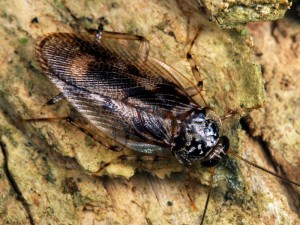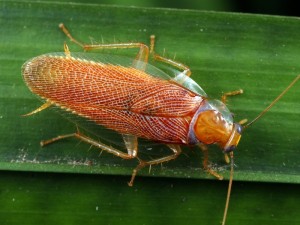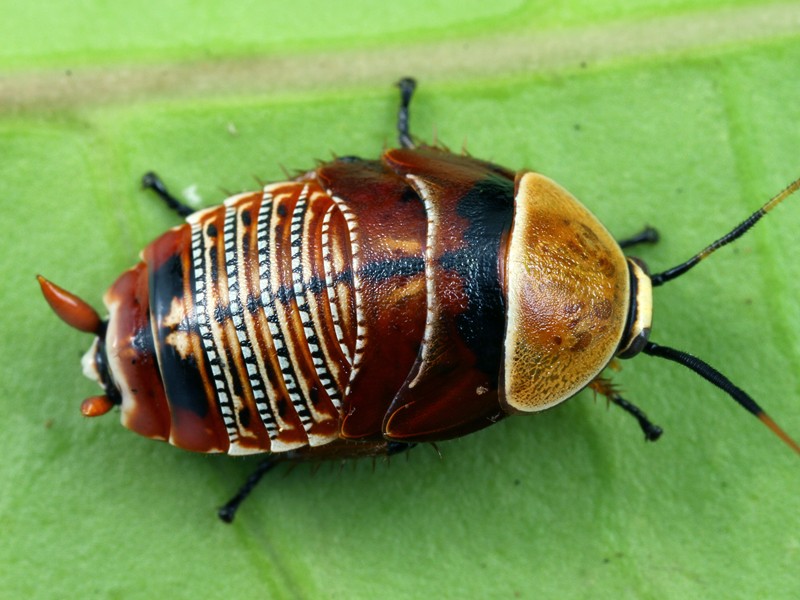Order Blattodea

cockroach from Queensland.
When you mention cockroaches, most people immediately think of the disgusting little creatures that invade homes and rummage through food and garbage, spreading germs as they go. But it’s probably worth considering that there are approximately 400 species of cockroaches in Australia, of which only a handful are introduced pests that have been responsible for this reputation.
Cockroaches are very primitive creatures and have remained largely unchanged for millions of years. They have flattened oval-shaped bodies, compound eyes and long antennae. Not all species have wings, but those that do have two pairs with the forewings being a little more sclerotised (hardened) than the hindwings.

family Ectobiidae.
The life cycle involves incomplete metamorphosis. The eggs are either laid close to a food source or are carried by the parent until they hatch. The young look basically the same as an adult, except they don’t have wings. They go through several nymphal stages (instars), moulting each time until adulthood is reached. Some species can live for several years.
Cockroaches have adapted well to most environments and live comfortably in some of the wettest and driest places. Not only are they valuable “garbage” collectors, but they are also a valuable food source for other native fauna, so they should be thought of as more than just a filthy pest.
~~~~~
Click here to see the Cockroach photo galleries
~~~~~

I owe a huge debt of gratitude to David Rentz for his help and guidance. A lot of my cockroach images have been identified thanks to him.